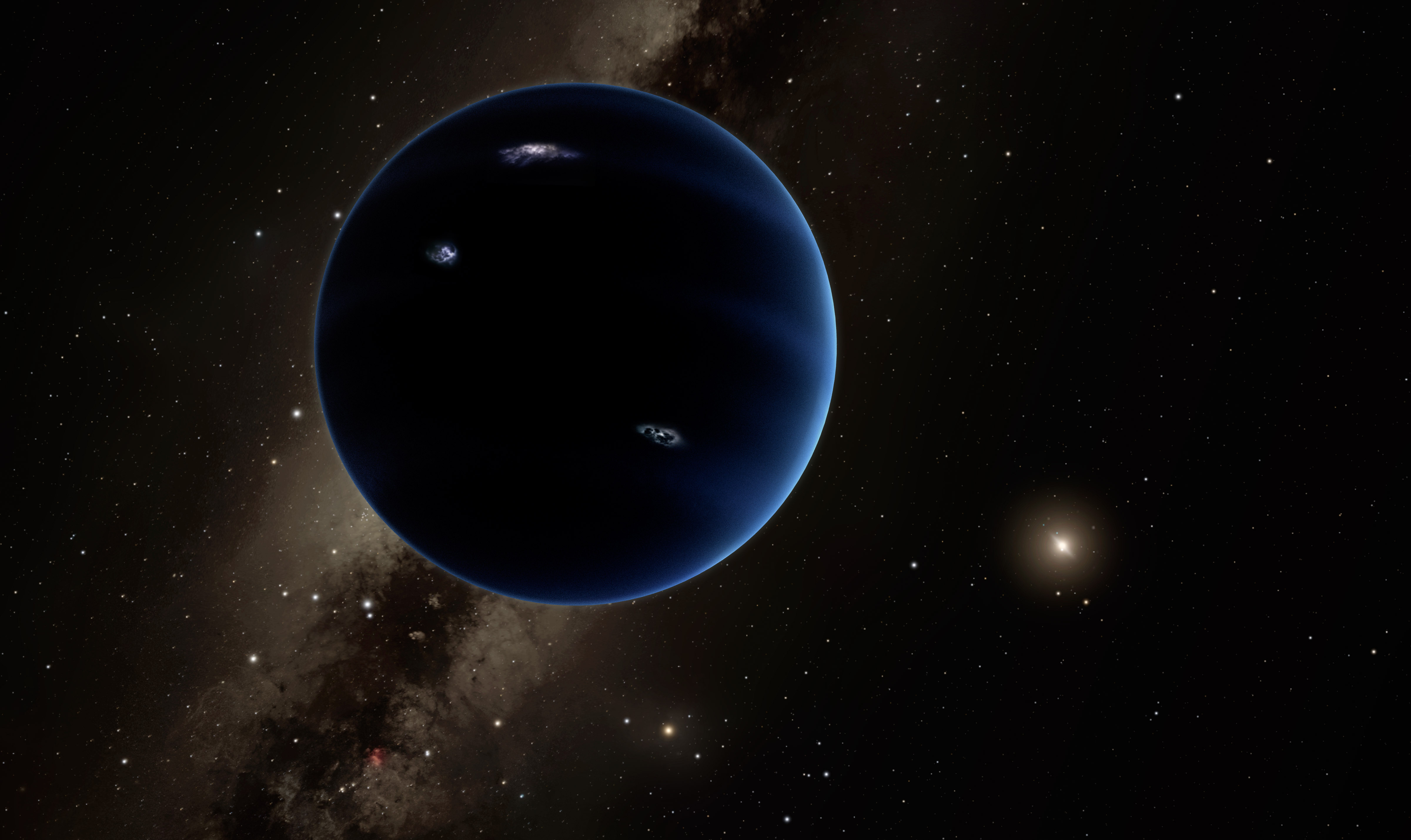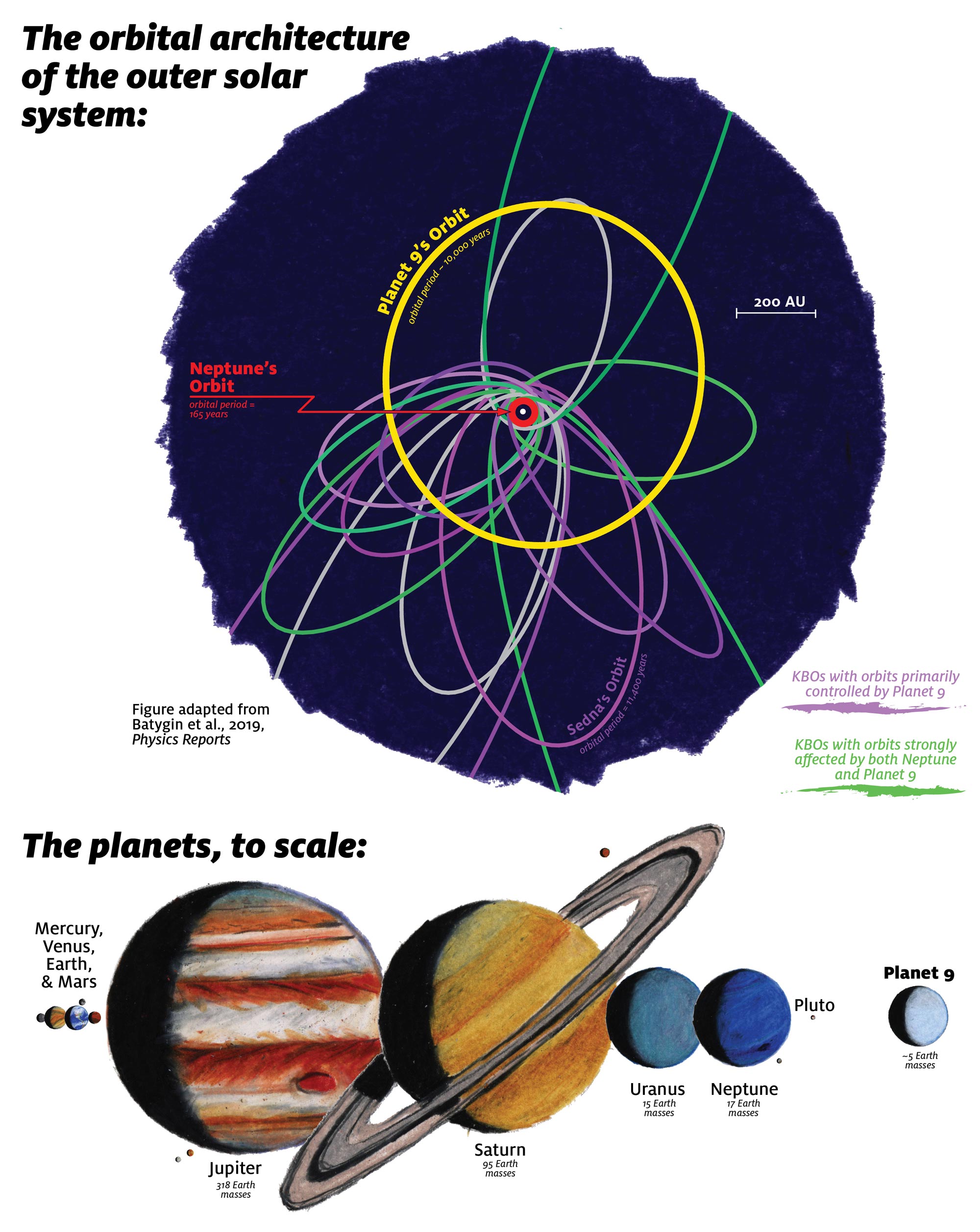Planet Nine Likely to Be Found Within a Decade

Planet Nine will probably be detected within a decade or so, if the putative world does indeed exist, a new study suggests.
Three years ago, Caltech astronomers Konstantin Batygin and Mike Brown estimated that the hypothesized Planet Nine — also known as Planet X, Giant Planet Five or Planet Next — is perhaps 10 times more massive than Earth and lopes around the sun at an average distance of 600 astronomical units (AU). (One AU is the Earth-sun distance — about 93 million miles, or 150 million kilometers.)
But in a detailed and lengthy new review paper, Batygin, Brown and two other researchers determined that the putative planet is likely smaller and less far-flung than that.
Related: The Evidence for 'Planet Nine' in Our Solar System (Gallery)
Observational evidence and computer-modeling work indicate that 10 Earth masses is an upper limit for Planet Nine, according to the new study. Indeed, 5 Earth masses, and an average orbital distance of 400 to 500 AU, are likely to be closer to the actual marks, the scientists found.
And that means Planet Nine is probably easier to spot than scientists had suspected.
"Perhaps counterintuitively, the increase in brightness due to a smaller heliocentric distance more than makes up for the decrease in brightness due to a slightly diminished physical radius, suggesting that Planet Nine is more readily discoverable by conventional optical surveys than previously thought," Batygin and his colleagues wrote in the paper. The study was published online this month in the journal Physics Reports. You can read it for free at the online pre-print site arXiv.org.
Breaking space news, the latest updates on rocket launches, skywatching events and more!
Indeed, the Panoramic Survey Telescope and Rapid Response System (Pan-STARRS) project in Hawaii could conceivably spy Planet Nine any day now. And even if the hypothesized world is on the fainter and more distant side, it will probably still be detectable by the Large Synoptic Survey Telescope, which is scheduled to come online in Chile in the early 2020s, the researchers said.
"Therefore, Planet Nine — if it exists as described here — is likely to be discovered within a decade," they wrote in the study.
The newly published paper also sums up the case for Planet Nine's existence, organizing the available observations into four main lines of evidence. All four deal with peculiarities in the orbits of small objects way out in the frigid wastes beyond Neptune's orbit.
Such peculiarities are best explained by the existence of a big, distant "perturber," whose gravity has shepherded the objects onto their current paths, the researchers wrote. (The magnitude of this sculpting effect is determined by both the perturber's mass and distance from the sun. So, a smaller-than-thought Planet Nine would have to be closer to the sun to produce the observed results.)
"Although this analysis does not say anything directly about whether Planet Nine is there, it does indicate that the hypothesis rests upon a solid foundation," Brown said in a statement.
This foundation is, indeed, very solid, Batygin said. In a conversation with Space.com last fall, he pegged the probability of the world's existence at "over 90 percent." Another key player in the Planet Nine hunt, Scott Sheppard of the Carnegie Institution for Science, is similarly bullish, putting the odds in the 80 to 90 percent range.
It may seem strange that an object considerably bigger than Earth could stay hidden in our own solar system for so long. But Planet Nine's neighborhood is extremely distant; for perspective, Pluto orbits the sun at an average distance of just 39.5 AU. So, Planet Nine is likely to be quite faint, and its orbital path is huge, meaning that astronomers have a lot of celestial ground to search.
"We've covered very little of the sky to the depth that's needed to be covered to find something this faint," Sheppard told Space.com last fall. "You can hide a very big thing in the outer solar system very easily."
Mike Wall's book about the search for alien life, "Out There" (Grand Central Publishing, 2018; illustrated by Karl Tate), is out now. Follow him on Twitter @michaeldwall. Follow us on Twitter @Spacedotcom or Facebook.

Michael Wall is a Senior Space Writer with Space.com and joined the team in 2010. He primarily covers exoplanets, spaceflight and military space, but has been known to dabble in the space art beat. His book about the search for alien life, "Out There," was published on Nov. 13, 2018. Before becoming a science writer, Michael worked as a herpetologist and wildlife biologist. He has a Ph.D. in evolutionary biology from the University of Sydney, Australia, a bachelor's degree from the University of Arizona, and a graduate certificate in science writing from the University of California, Santa Cruz. To find out what his latest project is, you can follow Michael on Twitter.

